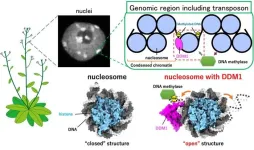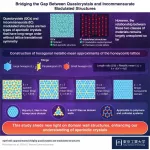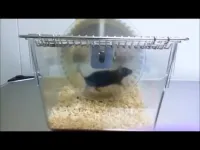(Press-News.org) The grants – each worth €150,000 – help researchers to bridge the gap between the discoveries stemming from their frontier research and the practical application of the findings, including early phases of their commercialisation.
Nanda Rea’s new project, called DeepSpacePULSE, aims to facilitate deep space exploration. Currently, to find their way, spacecraft and satellites use up a lot of energy exchanging vital navigation information with mission coordinators on Earth. Using ERC Proof of Concept funding, Prof. Nanda Rea will test the viability of a more efficient and autonomous navigation system. As part of her previous ERC Consolidator Grant-funded research, her team trained in locating compact pulsar stars, an essential tool of her newly designed navigation system. Pulsars, the final result of supernova explosions of very massive stars, can be used as perfect clocks with unprecedented stability, making them an ideal GPS system in space.
Leveraging the pulsars’ attributes, a navigation system was already created and successfully tested on the International Space Station, by NASA. Now, to enable the use of an X-ray pulsar navigation system in future solar-system missions, and also deep-space missions that could potentially last a hundred years, the DeepSpacePulse team will work on a more precise, autonomous, small, light navigation unit - expected to be as big as a microwave oven and weigh about 10kg. The new unit aims to improve by an order of magnitude almost all aspects of similar, currently used, space navigation systems, as well as to be competitive in both the public and private space markets.
Iliana Ivanova, European Commissioner for Innovation, Research, Culture, Education and Youth, said: “Since 2011 when the scheme started, ERC grantees have received over €300 million in Proof of Concept grants. Thanks to Horizon Europe funding, they could advance on the path from ground-breaking research to innovation. These researchers are a great example of how to translate and commercialise the strong research output funded by the EU. I warmly congratulate Professor Nanda Rea and all of the other new winners of Proof of Concept funding.”
President of the European Research Council Prof. Maria Leptin said: “Congratulations to all winners and of course the winner of the 2000th Proof of Concept grant! This milestone reminds us once again that many researchers seek to bring their research results to market. The ERC initially introduced its Proof of Concept funding because frontier research often generates radically new ideas that drive innovation and business inventiveness. We must invest seriously in such curiosity-driven frontier research, if Europe is to be able to lead.”
In this round, the largest share of the Proof of Concept projects went to researchers who will base their projects in the UK (15 projects), the Netherlands (14), Italy (12), France, Germany, and Spain (10 each), Israel (7), Belgium (5), Austria, Denmark and Sweden (3 each), Finland and Ireland (2 each) and finally Norway, Portugal, Slovenia and Turkey (1 each).
The Proof of Concept grant scheme is open only to researchers who currently hold, or have previously been awarded, ERC frontier research grants. These top-up grants help to explore the commercial or societal potential of the findings researchers made through their ERC projects. The objective is to enable ERC-funded ideas to progress on the path from ground-breaking research towards innovation.
The ERC’s 2024 work programme included two calls for proposals for Proof of Concept grants with a total budget of €30 million. The funding is part of the EU's research and innovation programme, Horizon Europe.
END
2000th ERC Proof of Concept grant awarded
2024-07-11
ELSE PRESS RELEASES FROM THIS DATE:
Wild plants and crops don’t make great neighbors
2024-07-11
Native plants and non-native crops do not fare well in proximity to one another, attracting pests that spread diseases in both directions, according to two new UC Riverside studies.
“We have changed the landscape, and it’s created opportunities for pathogens to thrive,” said UCR entomologist Kerry Mauck, who co-authored the studies. “We have introduced pathogens that damage native plants, and on the other side of the coin we have endemic pathogens that mutate to infect ...
Movement sensors show promise in identifying horses at injury risk
2024-07-11
PULLMAN, Wash. – A small 3-ounce sensor capable of recording 2,400 data points of movement in just one second being tested and refined by researchers at Washington State University could be key in reducing the number of injuries to racehorses.
Led by Dr. Warwick Bayly in WSU’s College of Veterinary Medicine, researchers used the biometric sensors, developed by the company StrideSAFE, to track thoroughbreds as they raced and trained at some of the top racetracks in the country. Using collected data, the team was able to identify miniscule stride changes associated with increased risk ...
Opening the right doors: “jumping gene” control mechanisms revealed
2024-07-11
International joint research led by Akihisa Osakabe and Yoshimasa Takizawa of the University of Tokyo has clarified the molecular mechanisms in thale cresses (Arabidopsis thaliana) by which the DDM1 (Decreased in DNA Methylation 1) protein prevents the transcription of “jumping genes.” DDM1 makes “jumping genes” more accessible for transcription-suppressing chemical marks to be deposited. Because a variant of this protein exists in humans, the discovery provides insight into genetic conditions caused by such “jumping gene” mutations. The findings ...
Blood fat profiles confirm health benefits of replacing butter with high-quality plant oils
2024-07-11
Switching from a diet high in saturated animal fats to one rich in plant-based unsaturated fats affects the fat composition in the blood, which in turn influences long-term disease risk. A recent study published in Nature Medicine, conducted by a team of researchers from Chalmers University of Technology, Sweden, the German Institute of Human Nutrition, Germany and several other universities, shows that it is possible to accurately measure diet-related fat changes in the blood and directly link them to the risk of developing cardiovascular disease and type 2 diabetes.
“Our study confirms with even more certainty the health benefits of ...
Air pollution harms pollinators more than pests, study finds
2024-07-11
Bees and other beneficial bugs are disproportionately harmed by air pollution compared to crop-destroying pests, a new study published in Nature Communications has found.
Researchers from the University of Reading analysed data from 120 scientific papers to understand how 40 types of insects in 19 countries respond to air pollutants like ozone, nitrogen oxides, sulfur dioxide and particulate matter. Pollinators - including bees and some moths and butterflies - experienced a 39% decline in foraging ...
Aperiodic approximants for relating quasicrystals and modulated structures
2024-07-11
For a long time, scientists associated crystal structures with an ordered arrangement of atoms in a repeating lattice-like pattern, believing it to be the most stable configuration. However, by the 1960s, advancements in crystallography revealed materials that did not fit the traditional model. These structures exhibit a non-periodic or non-repeating pattern and are called aperiodic crystals.
There are two types of aperiodic crystals: quasicrystals (QCs), which exhibit ordered but aperiodic arrangements, and incommensurately (IC) modulated structures, where a three-dimensional periodic lattice structure ...
Hydrogen flight looks ready for take-off with new advances
2024-07-11
The possibility of hydrogen-powered flight means greater opportunities for fossil-free travel, and the technological advances to make this happen are moving fast. New studies from Chalmers University of Technology, in Sweden, show that almost all air travel within a 750-mile radius (1200 km) could be made with hydrogen-powered aircraft by 2045, and with a novel heat exchanger currently in development, this range could be even further.
“If everything falls into place, the commercialisation of hydrogen flight can go really fast now. As early as 2028, the first commercial hydrogen flights in Sweden could be in the air," says Tomas Grönstedt, Professor at Chalmers ...
Same workout, different weight loss: Signal molecule versions are key
2024-07-11
Some people lose weight slower than others after workouts, and a Kobe University research team found a reason. They studied what happens to mice that cannot produce signal molecules that respond specifically to short-term exercise and regulate the body’s energy metabolism. These mice consume less oxygen during workouts, burn less fat and are thus also more susceptible to gaining weight. Since the team found this connection also in humans, the newly gained knowledge of this mechanism might provide a pathway for treating obesity.
It is well known that exercise leads to the ...
Trained peers are as effective as clinical social workers in reducing opioid overdose, new trial finds
2024-07-11
In Rhode Island, USA, over one in four emergency department (ED) patients at high risk of overdose has a non-fatal opioid overdose in the 18 months post-discharge. A parallel, two-arm, randomized controlled trial conducted in Rhode Island of over 600 ED patients at high risk of opioid overdose found that support from a peer recovery support specialist (a trained support worker with lived experience of addiction) was as effective in reducing opioid overdose as support from a licensed clinical social worker. In other words, interviewing and intervention techniques informed by lived ...
Study: Algorithms used by universities to predict student success may be racially biased
2024-07-11
Washington, July 11, 2024—Predictive algorithms commonly used by colleges and universities to determine whether students will be successful may be racially biased against Black and Hispanic students, according to new research published today in AERA Open, a peer-reviewed journal of the American Educational Research Association. The study—conducted by Denisa Gándara (University of Texas at Austin), Hadis Anahideh (University of Illinois Chicago), Matthew Ison (Northern Illinois University), and Lorenzo Picchiarini (University of Illinois Chicago)—found ...





